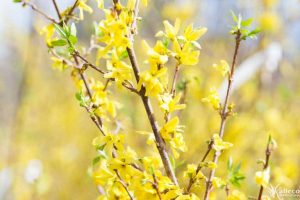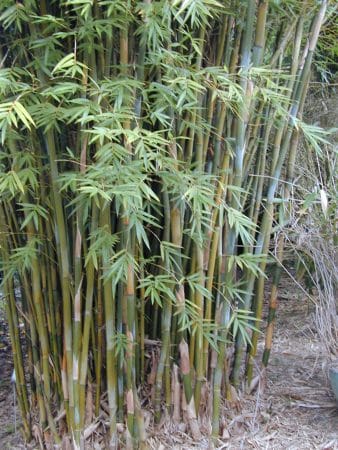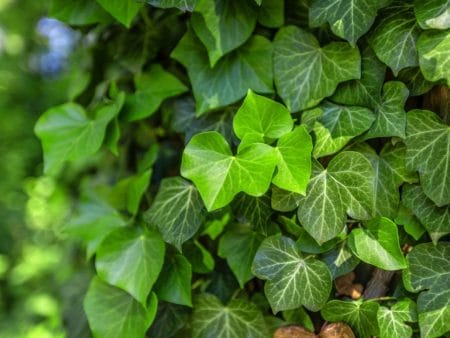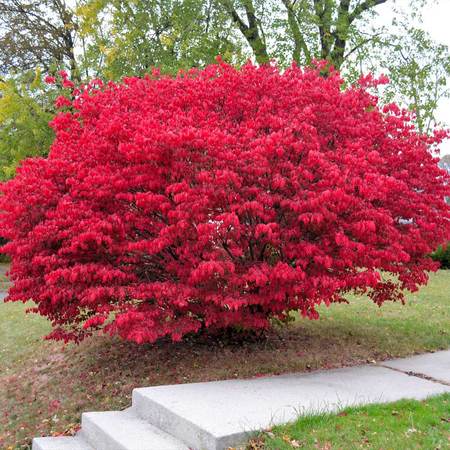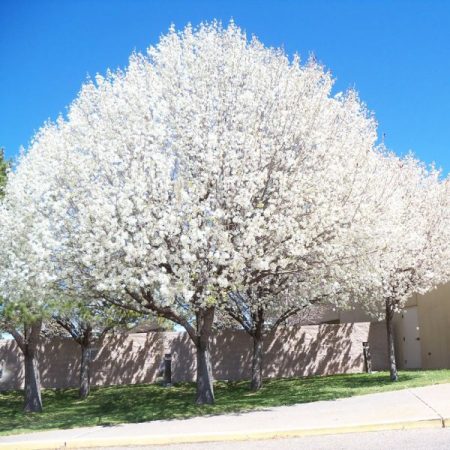Planting season is in full swing and so is our garden center. With so many flowers, shrubs, trees, and bushes to choose from for when deciding what to plant next, our knowledgeable nursery staff would like to remind you which species are not good for the environment or your garden. Some of these may surprise you, but don’t worry, we will give you several alternatives to choose from.
Forsythia
Forsythia is one of the first bright flower bushes to bloom in the early spring, they look beautiful, they brighten up the lawn after the drowsy long winter and they are also easy to use as natural walls or fences at the edge of property. However, they do have several downsides. As Forsythia is an early bloomer with such a vibrant and bright color, bees will flock to it in early spring, but unfortunately forsythia is a sterile plant. This means that they don’t produce pollen so bees can not use them as a food source. In addition, Forsythia can be considered an invasive plant to our area as well. It grows exponentially and can quickly take over an area, preventing other plants from growing. It can also be difficult to remove if one does need to as it takes over and repopulates so quickly.
 Bamboo
Bamboo
Bamboo is often used similarly to Forsythia to create a natural wall or fence between something as it grows thick and tall. However, bamboo grows very quickly and creates what we call a “bamboo desert” meaning it will push out any other plants already there and prevent anything else from growing in that area. It spreads fast, is difficult to rip out and invasively takes over.
What can be planted instead that is not invasive, yet is a bigger shrub/bush that can create a natural barrier?
- Bridal veil spirea
- Dappled Willow
- Privet
- Witch Hazel
- Spice Bush
- Viburnum
- Snow Mount
- Service Berry
- Nine Bark
- Purple Sand Cherry
- Lilac
- Boxwood
- Holly
- Evergreens
English Ivy
English Ivy is an invasive species to this area that spreads quickly and takes over. It can be pretty but is extremely harmful for the plants around it. English Ivy will strangle and suffocate the trees it grows around. It will also choke out all the other plants around it as well. It grows exponentially and blocks the sunlight from reaching the ground, killing anything underneath it. Similarly Trumpet Vine and Chinese Wisteria are nonnative plants that will do the same thing.
Some other beautiful native vines that can replace it include:
- Clematis
- Honey Suckle
- Creeping Jenny
- Climbing Hydrangea
- American Wisteria
- Ajuga
Burning Bush
Burning Bush is often chosen for its beautiful foliage that can be enjoyed for most of the summer, however it is an invasive plant from Asia. Burning bush repopulates quickly and easily making it the dominant plant in the area and pushes out all the other plants. Another major reason not to plant it if you are an animal lover is that if ingested by dogs and cats it can be highly toxic to them.
Instead of Burning Bush, plant…
- Blue Berries
- Oak Leaf Hydrangea
- Choke Berry
- Sweet spire Berry
- Euonymus evergreen
- Autumn Haz
- Viburnum
- Winter Verry
- Moonshadow
 Bradford Pear
Bradford Pear
Bradford Pear produces beautiful white flowers in the spring covering the whole tree and can look good along a fence or edge of the yard, however if you plant them near your house, you will soon come to regret it. In the spring when the flowers bloom, they put off a very off-putting smell that is unpleasant to be around. They are invasive and propagate themselves extremely quickly and easily, creating a thicket of them that can be difficult to get rid of. They will also crowd out native species and prevent anything else from growing around them.
Other Options that don’t smell bad and aren’t invasive?
- Cleveland Pear
- Flowering Cherries
- Crabapples
- Red bud

